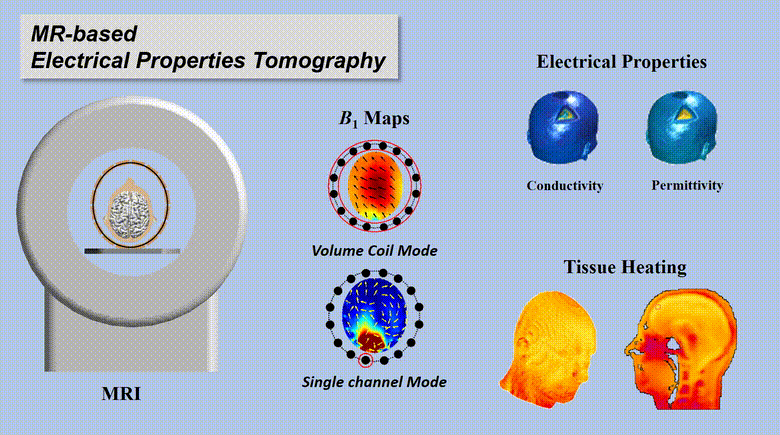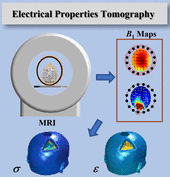
Electrical properties (EPs), namely conductivity and permittivity, are fundamental properties of materials, describing their capability to transfer electrical current or store energy of the electrical field inside the media. In biological tissue, there is a close relationship between EPs and the basic characteristics of tissue, such as water content, molecular composition, ion concentration, fraction of intracellular space, etc., as a function of the health condition of tissue. Noninvasively measuring the in vivo EPs of tissue can have an important impact on biomedical research and clinical applications.
Electrical properties tomography (EPT) was recently introduced for imaging EPs of tissue in vivo based on the measured radiofrequency B1 field data using MRI. EPT has the advantage of high resolution, simple setup and practical feasibility in a clinical environment. In this paper, we reviewed of the principle, reconstruction methods, biomedical applications and existing challenges of EPT. Meanwhile, as a key application of EPT, the estimation of B1-induced tissue heating during an MRI scan was discussed in the background of increasing risk of tissue heating at high field. Since the originally proposed local, homogeneous Helmholtz equation-based reconstruction algorithm, advanced EPT algorithms have emerged to address its challenges, including reconstruction error near tissue boundaries, noise sensitivity, inaccurate B1 phase estimation and elimination of the unmeasurable Bz component, along with demonstrations of in vivo experiments. EPT techniques have been applied to investigate EPs of both healthy and pathological tissues in vivo and factors contributing to various EP value, including sodium, water content, etc. EPT-based subject-specific SAR estimation has led to in vivo demonstration of its feasibility and quantitative prediction of temperature increase during MRI scans from the measured B1 data.

